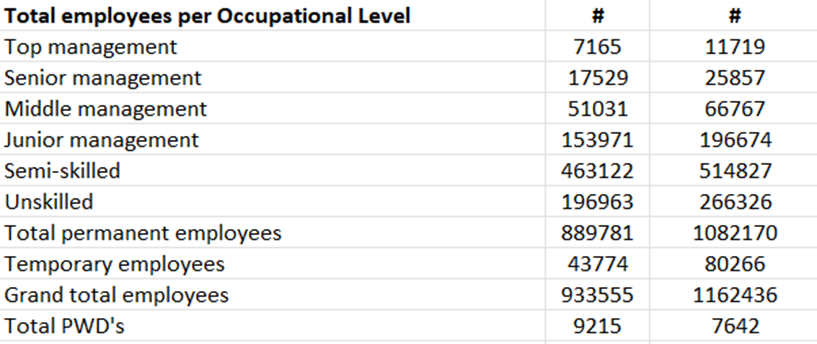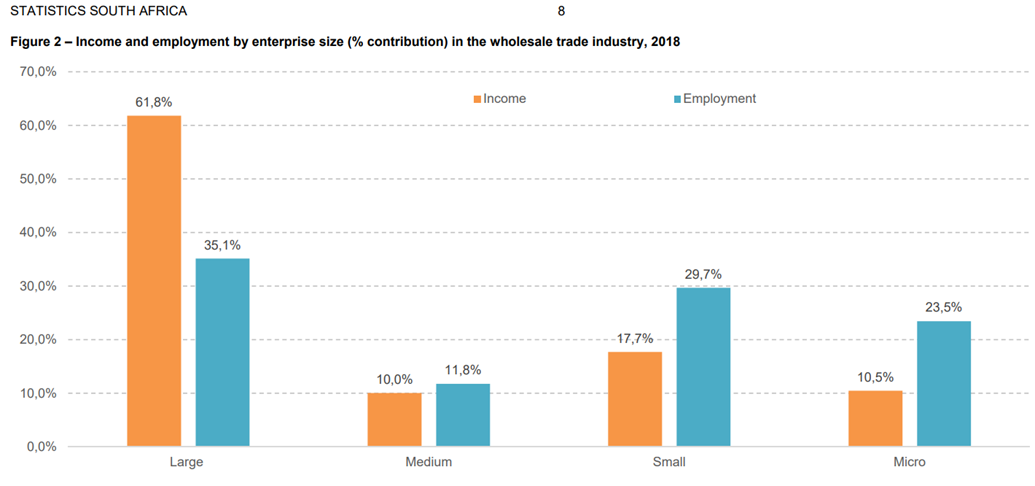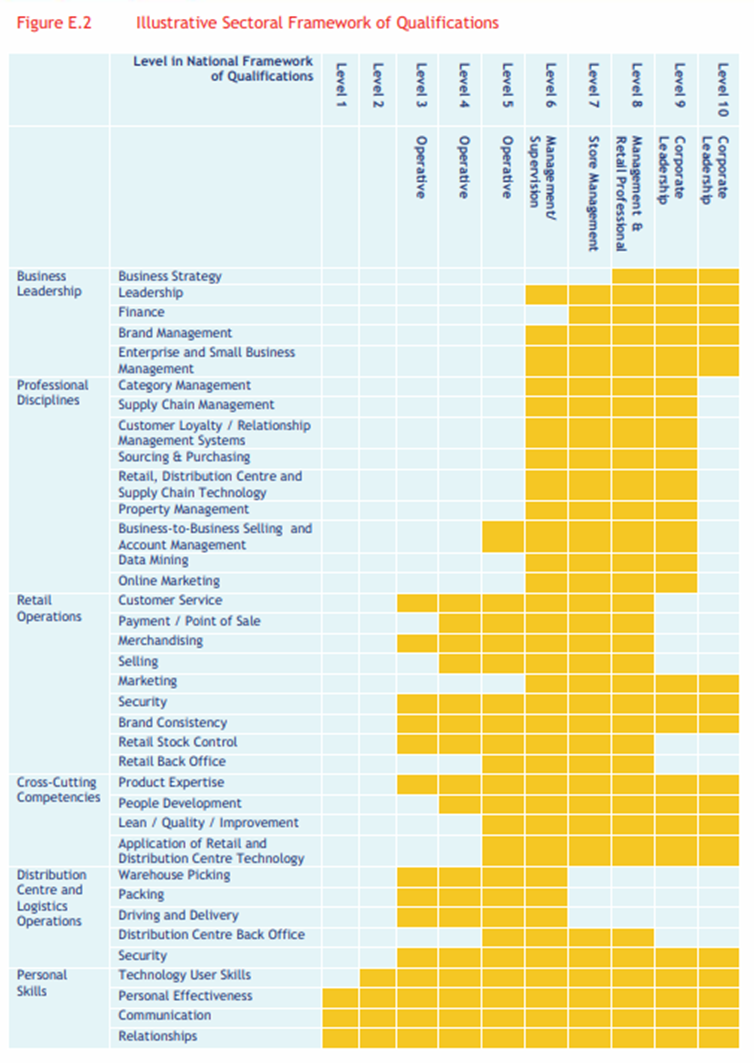Trends across occupational levels over the past 10 years in the W&R Sector
It is common knowledge that approximately 27 000 designated employers submit their EEA 2’s every year, covering the interests of more than 6 000 000 employees. Global Business Solutions is often called upon to conduct sector-specific research and benchmarking for its clients in order to better inform EE strategy and planning. The matrix below depicts the changes in the number of employees per occupational level over the past 5 years (column #1 is 2022/23 and column #2 is 2017/18) –

It is evident that the number of overall employees has decreased. Top and senior management have decreased by 39% and 32% respectively and unskilled by 26%. This trend is likely attributable to the management “recession” and technological changes which have resulted in the ability to operate without a large amount of senior managers as well as unskilled employees as repetitive tasks can be automated and data allows for edge-centric decision-making. Flatter organisational structures as well as we increases in outsourcing, sub-contracting and mechanisation are also driving these trends. The statistics SA graph below reflects how large (mostly, designated employers) organisations have a much lower ratio of employment to income as they have access to resources that optimise workforce productivity. It is likely that this trend will increase going forward as we approach the 5IR. Employers need to train for employment security and future skills if they are to assist in addressing unemployment, poverty and inequality.

The Future Skills Needs of the W&R Sector set out below provides great insight into the nature and extent of what the core competency requirements are.




